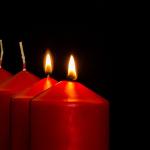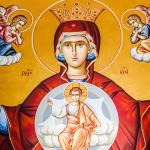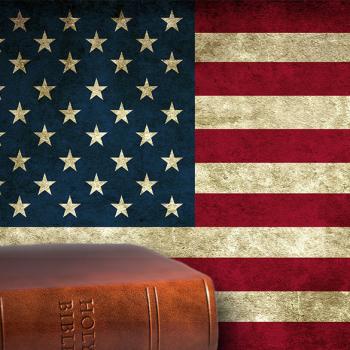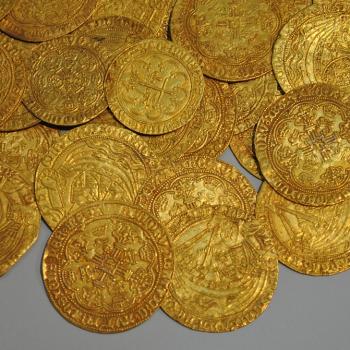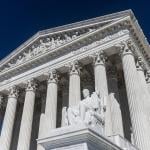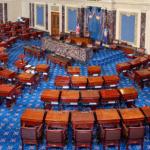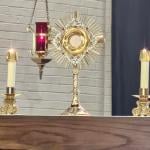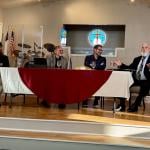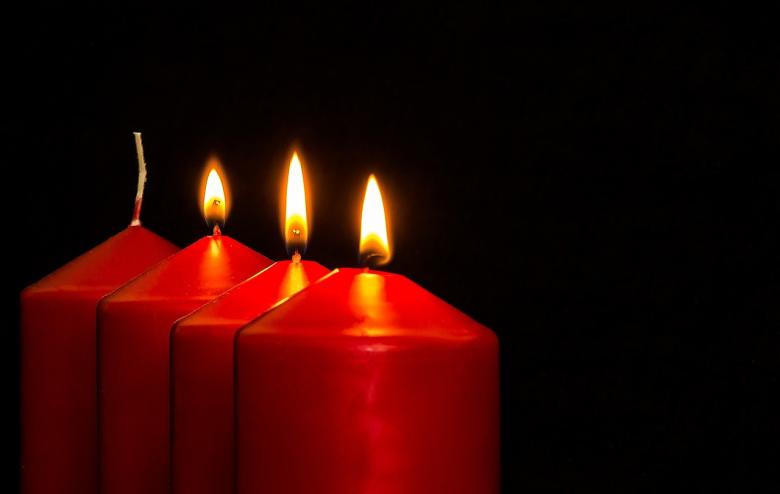
Image by Myriams-Fotos / Pixabay
On the third week of Advent we leave Mark’s Gospel and read the Gospel of John. We read about staying awake to the needs of our community and how it can be hard to do the work of our faith. Today, we look at John, who is by far the most theological and christological of the gospels. In John, the Light is the coming of what we have been looking for since the beginning of time.
“A man came, sent by God. His name was John. He came as a witness, to bear witness to the light, so that everyone might believe through him.He was not the light, he was to bear witness to the light… This was the witness of John, when the Jews sent to him priests and Levites from Jerusalem to ask him, ‘Who are you?’ He declared, he did not deny but declared, ‘I am not the Christ.’ So they asked, ‘Then are you Elijah?’ He replied, ‘I am not.’ ‘Are you the Prophet?’ He answered, ‘No.’ So they said to him, ‘Who are you? We must take back an answer to those who sent us. What have you to say about yourself?’ So he said, ‘I am, as Isaiah prophesied: A voice of one that cries in the desert: Prepare a way for the Lord. Make his paths straight!’ Now those who had been sent were Pharisees, and they put this question to him, ‘Why are you baptising if you are not the Christ, and not Elijah, and not the Prophet?’John answered them, ‘I baptise with water; but standing among you—unknown to you—is the one who is coming after me; and I am not fit to undo the strap of his sandal.’ This happened at Bethany, on the far side of the Jordan, where John was baptising.”
–The New Jerusalem Bible (New York: Doubleday, 1985), Jn 1:6-8, 19-28.
The Bright Light
Before our reading, John’s prologue begins at the beginning of time. In his passage, he notes that the light is the light of men (Jn. 1:4). The light came from the Word, and the Word was with God and was God (Jn. 1:1). The Light illuminated creation and overpowered the darkness (Jn. 1:5).
The Light is not a new concept to the Gospel of John or the New Testament. In Genesis, the Light and Darkness are separated on the first day. As John Walton notes, the separation of Light and Darkness (as well as the rest of the Creation story) is less history and science, and more about the God of Israel creating order in the chaos of the waters and setting up Their Divine throne on earth. The Light is victorious in taming the unknown and begins a relationship with Their people.
The prophets also use the Light when talking about the ways to live with God’s favor. They often use the term “walking in the light”. Isaiah uses Light as the ultimate ends of God when They set up Their kingdom. This Light will draw nations to Israel because it is the true Light of God (Isa. 60). This Light will be so powerful that the suffering of Israel by the hands of their enemies will cease, and nations will actually help them rebuild their city (Isa. 60:15).
In the Apocrypha and Second Temple Judaism, the Light shifts from the force of God to being true wisdom. To abandon this true wisdom leads to death. “Shed tears for the dead, who has left the light behind; shed tears for the fool, who has left his wits behind. Shed quieter tears for the dead who is at rest, for the fool life is worse than death (Sir 22:11).
Jesus as the Light
John’s Gospel is filled with Light. Jesus says “I am the light of the world; anyone who follows me will not be walking in the dark, but will have the light of life” (Jn 8:12). Jesus (as the Word, and as the Light) is the will of God on earth. If we want to know what God wants, we see it in Jesus. That’s why Jesus tells us to follow him – if we follow the ways of Jesus, we will follow the ways of God. The Light shows brightest in the darkness. The darkness is used to portray evil and the ways that go against God. However – what the darkness is – has changed over the years.
In the early 20th century, the darkness was seen in the Industrial Revolution. As the rich became richer, the workers were constantly dehumanized. This period of American Christianity was known as the Social Gospel – where Christians saw the poor and marginalized as their priority. Preachers worked to uplift the oppressed working class in real ways. They worked towards labor and social reform. You can read about Walter Rauschenbusch here.
What Now?
Advent is a time to wait. We reflect on the fact that there was a period of time before Jesus, before the Light was with us. Now, we have the Light, and we follow the Light. What is the Light calling you to do? What darkness is in your community? Where does the Light that is in you shine the brightest?
 Brad is a seminary student at Northwind Theological Seminary studying theology and the changing religious landscape in America. His masters thesis looks at the role of the 20th century American Church in labor and social reforms. He works as a research assistant at the University of Rhode Island’s College of Pharmacy providing education and support for rural New Englanders impacted by the opioid epidemic. Brad spends nights and weekends playing in regional bands as a bassist, guitarist, and vocalist. When not at a computer, he loves to spend time with his wife and chasing his toddler around the house.
Brad is a seminary student at Northwind Theological Seminary studying theology and the changing religious landscape in America. His masters thesis looks at the role of the 20th century American Church in labor and social reforms. He works as a research assistant at the University of Rhode Island’s College of Pharmacy providing education and support for rural New Englanders impacted by the opioid epidemic. Brad spends nights and weekends playing in regional bands as a bassist, guitarist, and vocalist. When not at a computer, he loves to spend time with his wife and chasing his toddler around the house.


